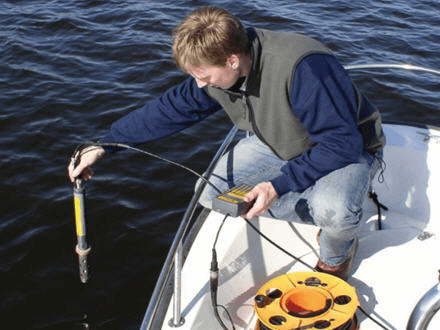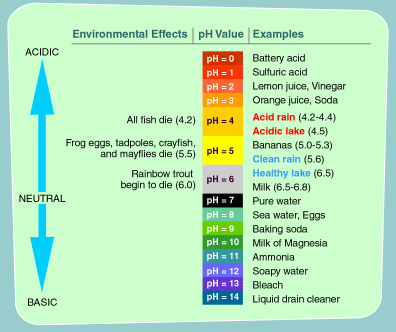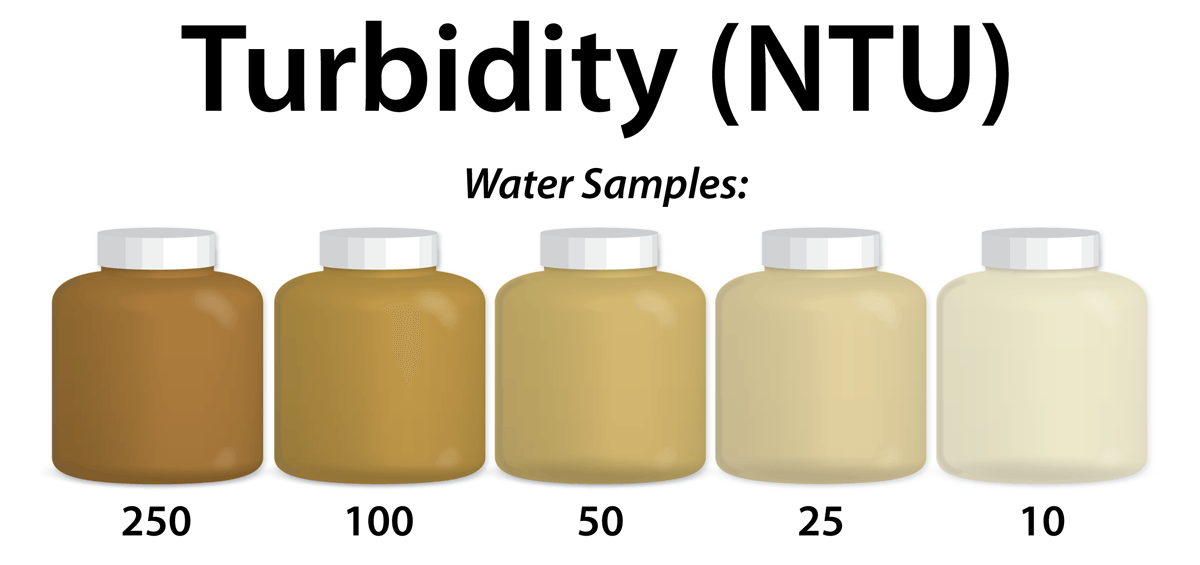Water Quality Testing Instruments Information
 Water quality testing instruments are used to test water for chemical and biological agents, and to measure variables such as clarity and rate of movement. These instruments provide a standard tool that can be used to collect information from various water sources. Water quality testing instruments can monitor water temperature, dissolved oxygen, pH, conductivity, nitrogen/phosphorus concentration, turbidity, macroinvertebrates, and levels of pesticides and toxic chemicals.
Water quality testing instruments are used to test water for chemical and biological agents, and to measure variables such as clarity and rate of movement. These instruments provide a standard tool that can be used to collect information from various water sources. Water quality testing instruments can monitor water temperature, dissolved oxygen, pH, conductivity, nitrogen/phosphorus concentration, turbidity, macroinvertebrates, and levels of pesticides and toxic chemicals.
Types of Water Quality Testing Instruments
Water quality testing instruments can be used to test a variety of conditions in a water sample. These measurements include:
Interface level analyzers are designed to detect the level of an oil and water interface.
Oil in water monitors are designed to measure the amount of oil in water.
Potential of hydrogen (pH) instruments measure pH levels. pH is critical to the vegetation and plant life in a body of water. pH can vary daily and between seasons due to the photosynthesis of plants. Contaminates from other sources, such as mine drainage, acid rain, or chemical spills can also cause drastic changes in the pH level. Water quality testing instruments use an electrode with a small electrical current to through the water sample. When immersed in water, the electrode develops an electrical potential that is related to the pH of the solution. A clogged or dirty junction is a common source of measurement error.

Voltammetry water quality testing instruments vary electric potential while measuring the resultant current, which can be used to determine the chemistry of the conducting medium. Devices use either anodic stripping voltammetry or cathodic stripping voltammetry.
Conductivity/dissolved solids - Conductivity is a measure of water's ability to conduct an electrical current. Conductivity is determined by the water temperature and concentration of dissolved salts or other substances that can carry an electrical charge. While there is no water quality standard for conductivity, it can be a useful diagnostic tool for interpreting other water quality information. It is measured with a meter and reported using units called micromhos/centimeter (mhos/cm). Conductivity meters are factory calibrated, but should be periodically tested for accuracy in a standard salt solution.
Turbidity/suspended solids - Turbidity is defined as the optical property of a sample that causes light to be scattered and absorbed. This quality varies with the number and size of particles present in the water column. Turbidity is relatively easy and inexpensive to measure and is often the basis for water quality standards. It can be correlated with suspended sediment on a site-specific basis. Turbidity can help monitor baseline trends as well as the effect of a specific project on water quality. The instrument which measures turbidity measures the scatter of light and performs better for high and low turbidity.

Dissolved oxygen - Dissolved oxygen (DO) refers to the amount of oxygen in water at a given temperature and a given atmospheric pressure. Since DO is critical for the entire biological community it is one of the principle parameters use to measure water quality. DO is usually measured in parts per million (ppm). Water can usually hole more dissolved oxygen at lower temperatures than at high temperatures. There are several methods which can be used to measure the DO in a water sample. Although DO meters can be used, the most accurate measurement comes from the Winkler Titration method. The timing of the sample is an important factor in testing the level of dissolved oxygen.
The biological oxygen demand (BOD) can be altered due to large inputs of organic material and by other oxygen sources that occur at specific times of the day of year. BOD is a measure of the amount of oxygen consumed in the biological process that breaks down organic matter in water. The greater the BOD, the less oxygen available for other biological uses.
 Dissolved carbon dioxide- Carbon dioxide is an acid which can affect the level of pH in a water sample. The level of dissolved carbon dioxide usually varies throughout the course of a day since all aquatic organisms produce carbon dioxide through their normal metabolism of food. Carbon dioxide levels are lowest just before sunrise and highest during the night.
Dissolved carbon dioxide- Carbon dioxide is an acid which can affect the level of pH in a water sample. The level of dissolved carbon dioxide usually varies throughout the course of a day since all aquatic organisms produce carbon dioxide through their normal metabolism of food. Carbon dioxide levels are lowest just before sunrise and highest during the night.
Chlorophyll/ algal pigments - Chlorophyll is the green pigment in plants that provides most of the plant's color and supports the process of photosynthesis. Chlorophyll is found in the cytoplasm of blue-green algae and the chloroplasts of plant cells. Typically, chlorophyll predominates over other photosynthetic pigments and thus is very important in the trapping of solar energy for algal growth processes. Chlorophyll absorbs light from the red and blue regions of the light spectrum. Since green light is reflected rather than absorbed, chlorophyll gives plants their characteristic green color.
Specifications
Water quality testing instruments differ in terms of form factor or mounting style, user interface, and output options.
Mounting Style
It is important to consider mounting style when selecting a water quality testing instrument. The mounting style should reflect the intended application requirements.
- Hand held, portable, or modular devices are intended to be operated while held by hand. This mounting style is best used for small samples and provides convenient carrying capacity.
- Laboratory or benchtop models are designed to sit atop a bench or desktop in a laboratory. They are not suitable for field use but are better suited for larger samples.
- In-situ/ field use are designed for use outside of the laboratory. They typically have a more rugged design and can handle different environments and terrain.
- Panel-mounted water quality testing instruments are attached to a panel, often with other testing equipment.
User Interface
 Like other types of products, they may include:
Like other types of products, they may include:
- Display
- Analog meter
- Digital display
- Video display
- Controls
- Manual controls
- Digital panel
- Computer interface
Output Options
Output options for water quality testing instruments include:
- Analog voltages - The output is an analog voltage. This is a simple, usually linear, function of the measurement.
- Analog currents - The output is an analog current that is imposed on the output circuit proportional to the measurement. Feedback provides the appropriate current, regardless of variables such as line noise and impedance. Analog current outputs or transmitters are often used to send signals over long distances. It is recommended for applications that send signals over long distances.
- Analog frequencies - The output is an analog frequency, a format which transmits information with continuous physical variables such as voltage amplitude or frequency variations.
- Switches or alarm relays - The output is a change-in-state of a switch or alarm.
There are two main interface options for water quality testing instruments: serial and parallel. Serial devices use a standard serial communications protocol such as RS232, RS422, RS485 or universal serial bus (USB). Parallel devices use a standard parallel communications protocol such as general-purpose interface bus (GPIB).
Video Credit: VirginiaTech
Features
Features and functionality are additional considerations when selecting water quality testing instruments. Some devices are:
- Temperature-compensation is available for devices that are used in a wide variety of environments.
- Battery-powered devices require batteries for full operation, not just a battery backup.
- Self-test features have diagnostics capabilities built into the device.
- Built-in or self-calibration devices are able to calibrate, test, and readjust within the device.
- Filters can be added for special signal processing or filtering.
- Event-triggered water quality testing instruments can capture or log data only when a specific event occurs.
- Extreme environment water quality testing instruments are designed to withstand relatively high levels of temperature or humidity, and/or prevent the ingress of dust.
- Special signal processing or filtering are also available.
Resources
Water Quality Monitor from Oregon.gov (pdf)
Engineering360 Article - Clean Water, Big Price Tag
Image credits:
Fotronic Corp. | Control Company | Three Rivers Parks | www.epa.gov | learnnc.org
- Analog Current Output
- Analog Meter
- Analog Voltage Output
- Battery Powered
- Built-in or Self-calibration
- Computer Interface
- Conductivity / Dissolved Solids
- Controller Functionality
- Digital Display
- Digital Front Panel
- Dissolved CO2
- Dissolved O2
- Event Triggered
- Extreme Environment
- Filters
- Hand Held
- In-Situ / Field
- Lab / Benchtop
- Manual Controls
- Modular
- Display Type: None
- User Controls: None
- Oil in Water
- Panel
- Parallel
- Portable
- Self-test / Diagnostics
- Serial
- Suspended Solids
- Switch / Alarm Relay Output
- Temperature Compensation
- Turbidity
- Video Display
- Voltammetry
- pH
- turbidity measurement
- water sensor circuit
- Total Suspended Solids
- turbidity meter
- water hardness analyzer
- anodic stripping voltammetry
- ARCNET analyzer
- CO2 measurement
- dissolved CO2 measurement
- fire water monitors
- H2S in Water Analyzer
- quality control pet bottle
- turbidimeter
- USB pH meter
- MEMS water quality
- multi-parameter water quality meter
- stenner quality chemical feeders manual
- water analysis meter
- water quality parameters testing
